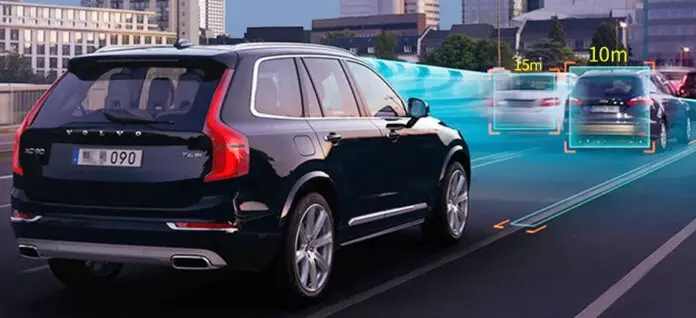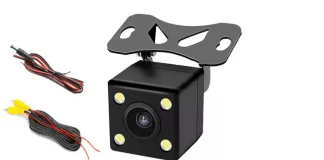Introduction
Advanced Driver Assistance Systems (ADAS) have revolutionised the automotive industry, enhancing vehicle safety and improving the driving experience. With advancements in technology, ADAS features are now accessible through some Android headunits, making them available to a broader range of vehicles, including those not originally equipped with such systems. This blog post will delve into the current state of ADAS, its benefits, and the role of Android headunits in integrating ADAS features into vehicles.
What is ADAS?
ADAS refers to a collection of electronic technologies designed to aid drivers in the driving process. These systems utilize sensors, cameras, radar, and other data sources to provide real-time information and assistance. ADAS can significantly enhance vehicle safety by reducing human error, which is a leading cause of traffic accidents.
Key Features of ADAS:
- Lane Departure Warning (LDW): Alerts drivers if they unintentionally drift out of their lane.
- Adaptive Cruise Control (ACC): Adjusts the vehicle’s speed to maintain a safe distance from the car ahead.
- Automatic Emergency Braking (AEB): Automatically applies brakes to avoid or mitigate collisions.
- Blind Spot Detection (BSD): Warns drivers of vehicles in their blind spots.
- Traffic Sign Recognition (TSR): Detects and displays traffic signs to inform the driver.
- Driver Monitoring System (DMS): Monitors the driver’s attention and alerts them in case of drowsiness or distraction.
- Front Collision Warning (FCW): Alerts driver when the distance and closing speed of the vehicle in front may lead to a collision.
- Front Vehicle Movement Reminder (FVMR): A reminder for the driver when the vehicle in front moves away.
- Drowsiness Detection (DMS): Driver-facing camera and AI image processing technology can detect and alert a Drowsy driver to take a break.
Current State of ADAS Technology
ADAS technology has seen rapid advancements, with many modern vehicles now equipped with these systems as standard or optional features. The integration of AI and machine learning has further enhanced the capabilities of ADAS, making it more reliable and efficient.
Hardware Components of ADAS:
- Cameras: Essential for capturing visual data. Front, rear, and surround-view cameras provide a comprehensive view of the vehicle’s surroundings.
- Radar Sensors: Used for detecting objects and measuring their distance and speed. Often employed in ACC and AEB systems.
- Lidar Sensors: Utilize laser beams to create high-resolution 3D maps of the environment, aiding in object detection and distance measurement.
- Ultrasonic Sensors: Commonly used for parking assistance and detecting objects at close range.
- Processing Units: High-performance processors and GPUs are required to analyze the vast amount of data collected by the sensors and cameras.
Role of Android Headunits in ADAS
Android headunits have become increasingly popular due to their versatility and ability to enhance the in-car entertainment and navigation experience. However, they also play a significant role in bringing ADAS features to vehicles that were not originally equipped with such systems. Typically the use of a front-facing camera and a suitable Android headunit will give many of the front or rear camera-based ADAS features.
These could typically include;
- Traffic Sign Recognition (TSR)
- Lane Departure Warning (LDW)
- Front Collision Warning (FCW)
- Front Vehicle Movement Reminder (FVMR)
Adding ADAS Features through Android Headunits:
- Software Integration: Android headunits can run ADAS applications that process data from external sensors and cameras. These apps provide real-time alerts and assistance to the driver.
- Hardware Connectivity: Many Android headunits come with ports and interfaces to connect external ADAS hardware, such as cameras and potentially radar sensors.
- User Interface: The touchscreen interface of Android headunits makes it easy for drivers to interact with ADAS features and receive visual and auditory alerts.
ADAS Camera and Processing Hardware:
To implement ADAS features via an Android headunit, the following hardware components are typically required:
- ADAS Camera: A high-definition camera is mounted on the windshield or grille to capture the road ahead. This camera is crucial for features like LDW, FCW, FVMR and TSR.
- Processing Unit: A dedicated processing unit or an integrated solution within the headunit is necessary to handle the data from the ADAS camera. This unit processes the visual data and runs complex algorithms to identify objects, detect lanes, and recognize traffic signs. Typically this could be a Neural Processing Unit (NPU) or AI-dedicated silicon on the Processor.
- Connectivity Modules: These include Wi-Fi, Bluetooth, USB, CAN BUS and sometimes even cellular modules to ensure seamless communication between the headunit, sensors, and external devices.
Benefits of ADAS
ADAS offers numerous benefits, both in terms of safety and convenience. Here are some of the key advantages:
Improved Safety:
- Reduction in Accidents: ADAS features such as AEB, LDW, and BSD help prevent collisions and reduce the severity of accidents.
- Enhanced Driver Awareness: Real-time alerts and assistance keep drivers informed about their surroundings, helping them make better decisions.
- Drowsiness Detection: DMS systems can detect signs of driver fatigue and issue timely warnings, reducing the risk of accidents caused by drowsy driving.
Convenience:
- Stress Reduction: ADAS features like ACC and parking assistance make driving less stressful, especially in heavy traffic or challenging parking situations.
- Efficient Navigation: TSR and other navigation aids help drivers stay informed about road signs and speed limits, promoting safer and more efficient driving.
- Driver Assistance: Advanced features like autonomous parking assist and lane-keeping assist can take over certain driving tasks, making driving easier and more comfortable.
Future of ADAS
The future of ADAS looks promising, with ongoing research and development aimed at making these systems even more advanced and reliable. Here are some trends and potential advancements:
Integration with Autonomous Driving:
- Higher Levels of Autonomy: ADAS is a stepping stone towards fully autonomous vehicles. Future systems will likely integrate more advanced AI and machine learning algorithms to handle complex driving scenarios.
- V2X Communication: Vehicle-to-everything (V2X) communication will enable vehicles to communicate with each other and with infrastructure, enhancing the capabilities of ADAS and improving overall road safety.
Enhanced Sensing and Processing:
- Improved Sensors: The development of more accurate and reliable sensors, including advanced lidar and radar systems, will enhance the performance of ADAS.
- Edge Computing: The use of edge computing will enable faster and more efficient processing of ADAS data, reducing latency and improving real-time decision-making.
Broader Accessibility:
- Aftermarket Solutions: As technology becomes more affordable, aftermarket solutions for integrating ADAS into older vehicles will become more common.
- Regulatory Support: Governments and regulatory bodies are likely to mandate certain ADAS features, driving wider adoption and standardization.
How Android Headunits Enhance ADAS in Older Vehicles
For vehicles not originally equipped with ADAS, A suitable Android headunit offers a viable solution to enhance safety and convenience. Here’s how:
Retrofitting ADAS Features:
- External Sensors and Cameras: Android headunits can be connected to aftermarket ADAS sensors and cameras, enabling features like LDW, BSD, and AEB in older vehicles.
- Software Applications: ADAS applications available on the Android platform can provide real-time processing and alerts, leveraging the data from external hardware.
Example Setup:
- ADAS Camera Installation: Install an ADAS camera on the windshield. This camera will capture the road ahead and feed the visual data to the Android headunit.
- Connecting the Camera: Use an appropriate interface (e.g., USB) to connect the camera to the Android headunit.
- Installing ADAS Apps: Download and install ADAS applications from the Google Play Store. These apps will process the camera data and provide real-time alerts.
- Configuring Alerts: Set up visual and auditory alerts within the ADAS app to ensure the driver receives timely warnings and assistance.
Conclusion
Advanced Driver Assistance Systems (ADAS) represent a significant leap forward in vehicle safety and driving convenience. While many modern vehicles come equipped with these systems, Android headunits offer a practical solution for retrofitting ADAS features into older vehicles. By integrating external cameras, sensors, and ADAS applications, drivers can benefit from enhanced safety and convenience without needing to invest in a new vehicle. As technology continues to evolve, we can expect even more advanced and accessible ADAS solutions, paving the way towards a safer and more efficient driving experience for all.








